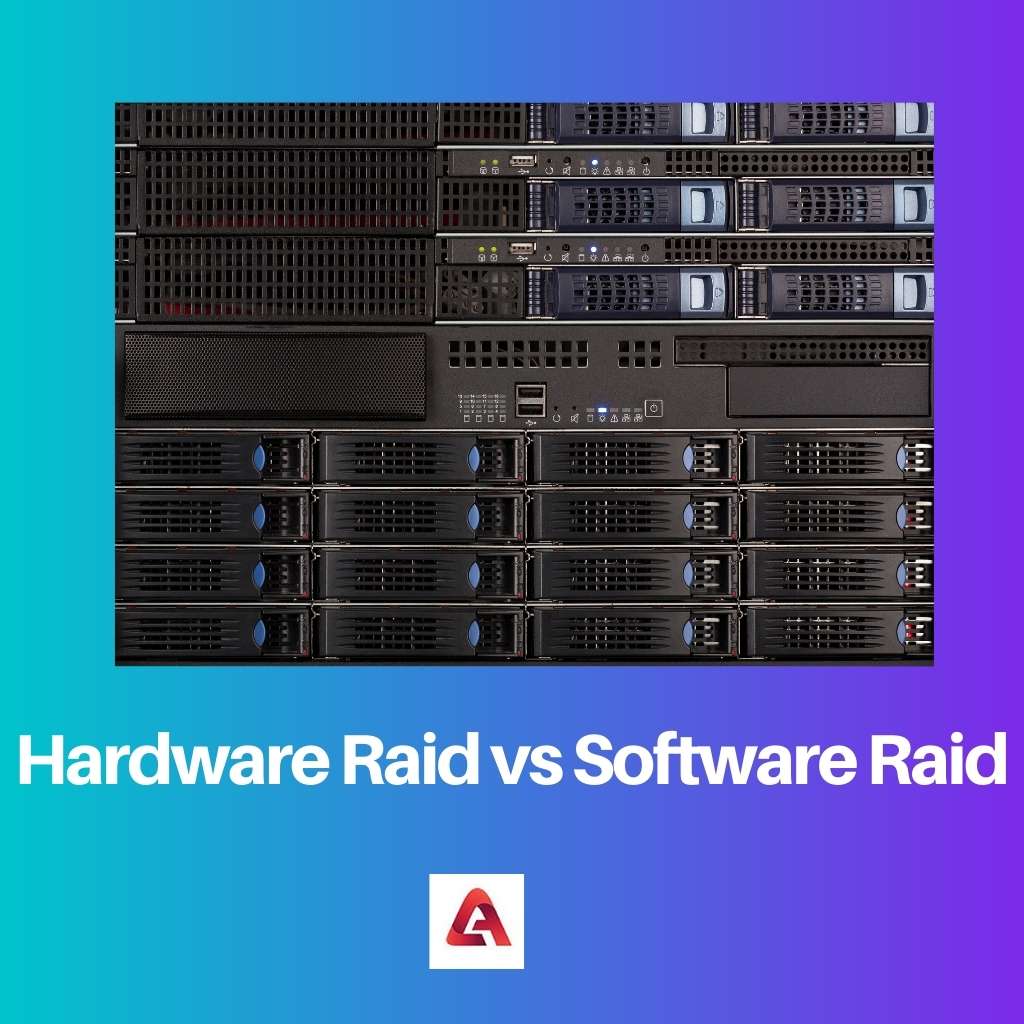Raid is one of the most common methods of improving the efficiency and capacity of storage media. Raid stands for Redundant Array of Inexpensive Disks and it is a method of increasing the disks of the storage drivers to store more content in the drivers.
Raid can be done using software or by implementing the required hardware.
Key Takeaways
- Hardware RAID is a physical storage controller that manages multiple hard drives, while the operating system manages software RAID.
- Hardware RAID is more expensive than software RAID.
- Hardware RAID provides better performance and reliability than software RAID.
Hardware Raid vs Software Raid
Hardware RAID is a method for organizing data across multiple hard drives that uses a dedicated controller for managing the RAID array and is faster and more reliable. Software RAID uses the computer’s operating system and CPU to organize data, and is easier to configure and more flexible.

Hardware Raid is a process where a special control unit called a Raid Controller is used to divide the space in the memory drive of a device.
In this method, the data stored in the memory drivers are distributed in discrete packets throughout the device memory drivers with the help of the Raid controller.
Software Raid is a newer approach to Raid and it uses the same basic concept of Hardware Raid, but the process is implemented using the software.
The software allocates the memory inside the drivers to improve the efficiency of storage as well as to improve the performance of the device driver.
Comparison Table
| Parameters of Comparison | Hardware Raid | Software Raid |
|---|---|---|
| Application | A control unit called Raid Controller is used | The software uses the same hardware as the PC |
| Performance | The performance of the Raid process depends on the Raid controller | The performance of the Raid process depends on the CPU of the PC |
| Process | As it is a hardware process, disk swapping may be required | As it is a software process, disk swapping is not required |
| Security | Hardware Raid offers much more security to the data | Software Raid is less secure |
| Cost of implementation | Hardware Raid is expensive due to the control unit involved | Software Raid is comparatively less expensive |
What is Hardware Raid?
Hardware Raid is the process of allocating the device space more efficiently to increase the performance as well the efficiency of data storage. The process ensures that the complete disk space is utilized with zero wastage of disk space.
Hardware Raid is implemented using a control unit called Raid Controller. Raid Controller is the main processing unit that establishes the amount of storage to be allocated in the device driver to implement the raid process.
Thus the main advantage of using this process is that the CPU processing power is not used for distributing the memory in the memory driver. The processing of raid process is managed by the Raid controller.
As it is a hardware process, disk swapping may be required depending on the type of disk being used in the driver. This increases the cost of implementing the raid process in the PC.
Another advantage of this process is that as there is no software component involved, the chances of data corruption in the device are very low, thus ensuring the security of the data stored inside the drivers.
Hardware Raid is an expensive process compared to Software Raid, but it is more effective in increasing the efficiency of storage drivers.
What is Software Raid?
Software Raid is a relatively newer method of implementing the Raid process in a storage device. In this process, the device memory is allocated using software and the process is implemented to increase the efficiency of the storage drivers.
The Software Raid process is very similar to Hardware Raid but instead of using a hardware control unit to implement the process, the software is used.
Thus the processing power required for implementing the raid process is borrowed from the CPU of the computing device. Thus this process is not as efficient as the Hardware Raid process.
The distribution of memory in the device drivers is performed using the Raid software and thus there is no provision for disk swapping, as the same disks available in the device are used for the process.
The main disadvantage of using this Raid process is that the security of the data stored in the device is very less, as the Raid software can get corrupted over the usage. Thus it is not recommended for commercial applications.
Software Raid is also not as expensive as Hardware Raid, as there is no hardware component involved in the process and the CPU of the PC performs the entire processing.
Main Differences Between Hardware Raid and Software Raid
- In Hardware Raid control unit called Raid Controller is used. There is no hardware involved in Software Raid
- The performance of Hardware Raid process depends on the Raid controller. The performance of Software Raid process depends on the CPU of the PC.
- In Hardware Raid, disk swapping may be required. No disk swapping is required in Software Raid.
- Hardware Raid offers much more security to the data. Software Raid is less secure.
- Hardware Raid is expensive due to the control unit involved. Software Raid is comparatively less expensive




